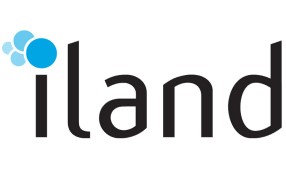
COVID-19 has created a demand for greater flexibility. There is a need to secure these cost reductions, so many organisations are now looking to the cloud. Cloud spending rose by 37% to £20 billion during the first quarter of 2020. Gartner reports a 19% growth in cloud spending in 2020, even when IT spending overall was down by 8%. There are many benefits to moving to the cloud. One of these is cost reduction. Others include agility, flexibility, scale, working from home capabilities, and budget allocations from CapEx to OpEx.
Organisations need to look at how to do the right due diligence upfront when choosing cloud services. This will help achieve their IT budget goals in the long term. In many cases, price doesn’t always equal cost. Organisations need to look at the different services and costs available before they deploy to the cloud. This is because different approaches to cloud technology and pricing could save them money in the long term.
Are we overspending on cloud?
In many cases, issues at the time of cloud adoption can prove costly to an organisation over the long term. For most, the top cloud initiative for 2020 was optimising the existing use of cloud through cost-saving. That is because organisations can often make mistakes during the adoption and due diligence process. These lead to them overspending on cloud services by 20-50% indefinitely.
In many instances, using a hyperscale cloud provider runs the risk of an organisation paying for more than they consume in the cloud. Organisations often pay more for CPU and RAM, but their company will only use a fraction of what has been allocated to them. Many cloud environments are configured more often than not to meet the application vendors’ specifications. It means that organisations end up in a situation where the resources they are paying for are not consumed. When organisations pay for consumption, they can still allocate and configure what they actually consume and still meet the vendors’ specifications. This mistake with pricing models is why many organisations end up overspending by 20-50% indefinitely on their cloud services.
Additionally, in terms of storage models in the cloud, many hyperscale cloud providers will have additional transactional costs. It means an organisation’s overall cost will be higher and can fluctuate significantly.
Traditionally, hyperscale cloud providers are the most widely adopted. But the reality is that just because they are popular doesn’t necessarily mean they are the most cost-effective for many organisations. Hence, organisations should only be paying for what they are consuming in their cloud environments and picking the right consumption, pricing and storage models from their cloud provider as it can make a significant difference.
The hidden costs of the cloud
When migrating to the cloud, many organisations will ask, ‘what is the price of cloud?’. When making a cloud purchase or migrating, many organisations look at it in terms of how much compute and storage they need. However, even with compute and storage, the process is not as straightforward as you may think. With many providers, there will be additional components that organisations need to factor in before making a purchase. This includes backup, monitoring, security (firewalls, antivirus etc.) and support.
When organisations look at the initial pricing of cloud services, the additional components may not be factored into the equation, or organisations may assume they are included in the service. These components are frequently sold separately at an additional cost by hyperscale cloud providers. It means the fully scoped service may end up costing more. When choosing your cloud service provider, organisations need to make sure all the additional components are included in the overall cost. This is because the lowest initial price doesn’t always mean the lowest costs long term.
How to save on cost in the cloud
To avoid these costly mistakes, organisations need to adopt the framework below. It can effectively reduce the total costs of IT and prove it before deploying to the cloud.
1. Understand your driver for change to the cloud
Evaluating your drivers to deploy to the cloud is important when looking to reduce costs. It can temper expectations of what is possible in terms of cost reduction. Organisations need to consider their driver for change and preserve what their applications and their business require.
2. The lowest price doesn’t always equal the lowest cost
When considering different cloud service providers, organisations may be tempted to pick the cheapest one. However, it is important to consider that this low price may be because the cloud service provider will only cover the organisation’s basic needs. There will be many additional costs on top of this.
3. Measure twice, cut once – calculate costs before you deploy
Cloud can be easy to deploy, but it can be very costly along the way due to mistakes made. Therefore, organisations need to measure the cost performance before they deploy to the cloud.
4. Cloud infrastructure matters
With all the different cloud provider offerings, there will be technologies that will be superior to others for an organisation’s specific business needs. These range from compliance requirements to service and support levels. Therefore, organisations must evaluate which provider will give them the best offering and cloud infrastructure for them.
Conclusion
Choosing the right service cloud provider for your organisation is sometimes a confusing task. Doing the right due diligence upfront will help reach IT budget goals in the long term. Organisations need to take into consideration what the right consumption, pricing and storage models are for them. Establish if there are hidden costs for additional components like security and support. They should also adopt the framework outline to secure the best price for cloud services not only initially but in the long term.

























